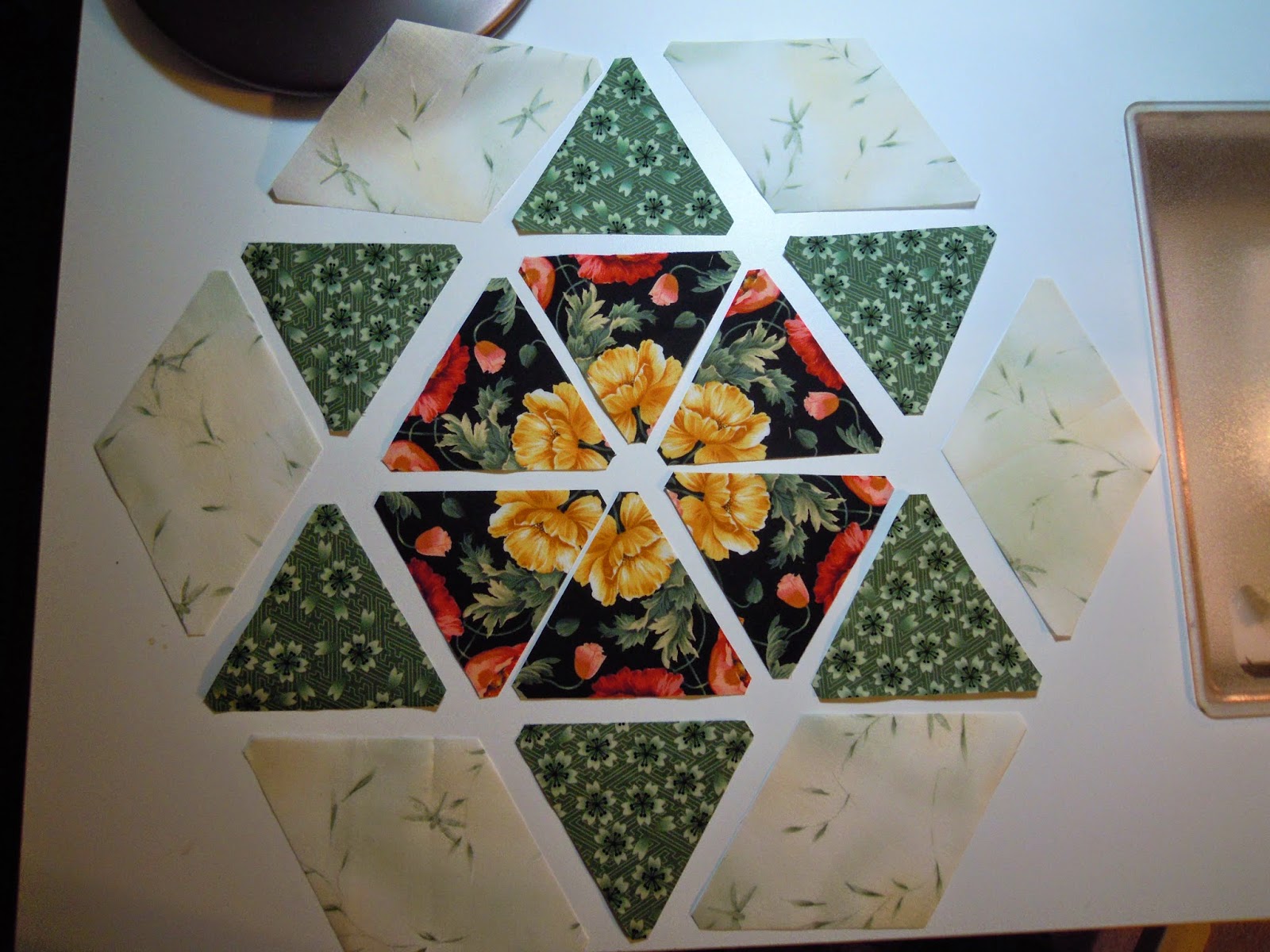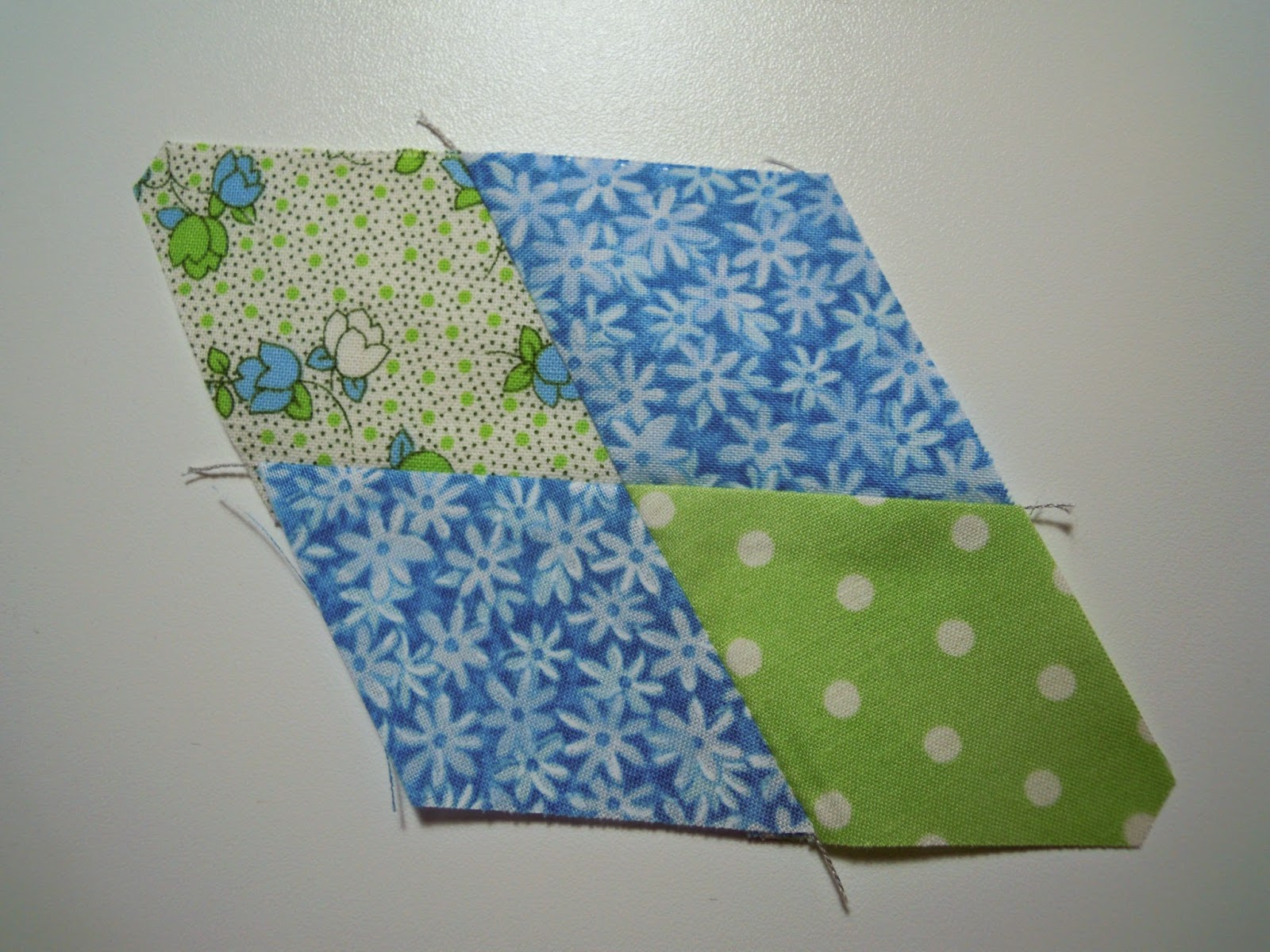With the end of the month looming, I'm organizing my head to set a few goals for next month and one of the finishes I'd like to accomplish is this basket sampler. I made the 12" blocks a few years ago for a workshop with Marti Michell's Set M which can be used to make 12" 5-patch blocks. Then when her Long Skinny Sashing Set came out early last year, I set the blocks together using that tool to make the sashed stars. And since then, I've been hauling it around as a teaching sample for workshops based on her book, Machine Quilting in Sections. But now it's time to finish it!
In the first which I learned while taking teacher seminars with Mary Ellen Hopkins based on her classic book, It's Okay if You Sit on My Quilt, you need two measurements and plenty of fabric so you can cut big squares of the setting fabric to begin.
For the edge triangles -- top, bottom, and sides -- you need to know the diagonal measurement. A 12" square has a diagonal measurement of 17".
To this diagonal measurement, add 2 1/2" to 3" -- so I need to cut mine 20". Cut one square of the setting fabric for every 4 setting triangles needed. Cut each of these squares on both diagonals as diagrammed below. This keeps the straight of grain on the outside edges of the quilt making it more stable when it's time to add borders. These triangles will be larger than necessary but I like having that extra "float" around the edges when lining up my border strips -- I can trim it down if need be though I seldom do.
The second measurement is the standard size of the block -- 12" in my case. Add 2" to this measurement. Again it's more than necessary but good insurance! I always need two of these squares as each will be cut on just one diagonal to make 4 triangles for the 4 corners of the quilt.
The second approach is based on Marti Michell's tools. Several years ago, she introduced Diagonal Set Triangle Rulers which allow you to cut setting triangles from strips. The advantages of these tools is that you don't need to do any calculations and as long as you keep the straight of grain in the right place, you can cut your setting triangles from strips which sometimes is all one has left of the "perfect" fabric.
There are two styles -- this is the large size of the half triangle for cutting setting triangles for blocks that are from 6" to 16" square. The card has complete instructions on how to cut with the ruler and if you undo the pink gizmo you see sticking out of the top of the card instead of cutting it off, you can re-attach the card to the tool so you'll know exactly where it is the next time you use the tool!! The small size tool works for 3" to 9" blocks. The corner triangles are cut with the same tool. The ruler gets flipped in the cutting process -- once you've done it a couple times, you may not need to even read the instructions (though I always do just to be sure).

For those who don't want to "flip" the tool, there is now a pair of FULL Diagonal Set Rulers -- the large one is for blocks that are 5" to 16" and the small one is for 2 1/2" to 10" blocks.
To use the tools, you just need to know the finished size of the block! You may not even need a ruler to get that number? Each of the horizontal lines on the tools are labeled. Here I'm cutting setting triangles for 7" blocks. I start by cutting a strip of the setting fabric to match the line labeled 7" (though I usually bump it up a size just because I like that extra float).
The first cut makes a triangle for one of the corners of the quilt -- no waste here!
This is the cut using the full size tool -- pretty simple!!
With the half-triangle tool, it's the same approach -- cut the size strip listed on the tool. Cut off the first corner triangle. To align for the first side triangle, I flip the tool to this position and align the top corner to the existing diagonal cut and the top edge of the strip.
This is a close-up of that alignment! Cut off the triangle along the edge of the tool. And move down the strip cutting the number needed.
The instructions that come with the tools are well illustrated and clear. So look for these tools on your next shopping foray. I have them here in my sales stock even though they aren't on the website so if you want one, contact me at maryhueyquilts@hotmail.com and I'll advise you of the cost and the shipping.Back to searching for a couple more projects to finish in May!!
Mary Huey
www.maryhueyquilts.com



















































